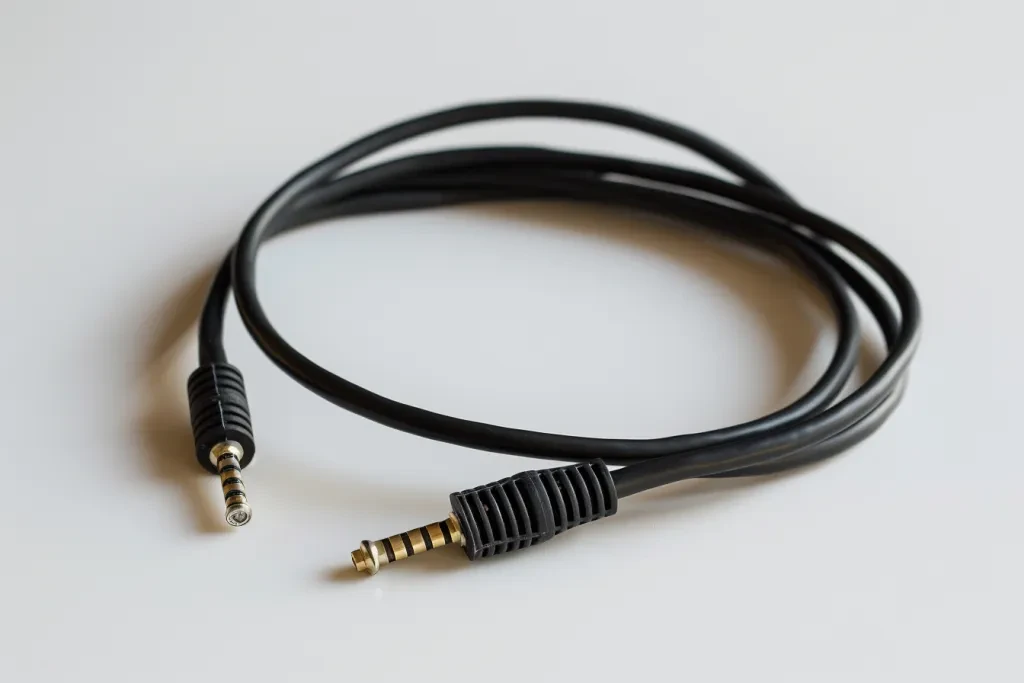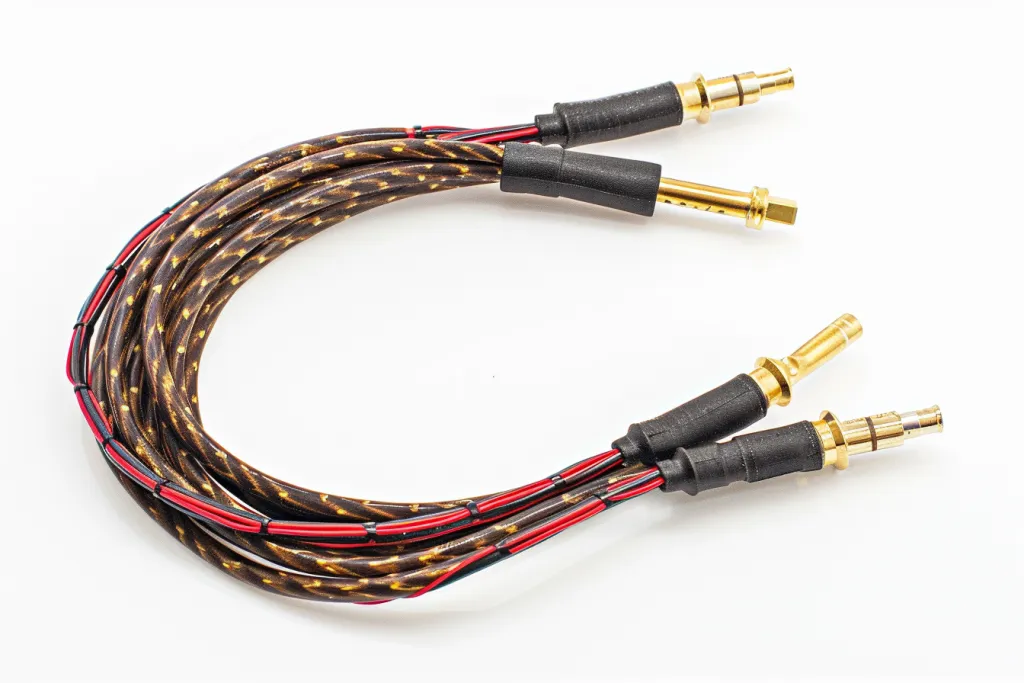In 2025, the speaker cable market continues to evolve with cutting-edge innovations and growing consumer demand for high-quality audio solutions. This article delves into the latest trends, technical specifications, and practical tips to help professional buyers make informed decisions. From understanding market growth to evaluating performance factors, this comprehensive guide is essential for wholesalers, retailers, and purchasing professionals in the global market.
Table of Contents:
– Understanding the Current Speaker Cable Market
– Analyzing Consumer Preferences and Demand
– Technical Specifications to Consider
– Evaluating Performance and Durability
– Practical Tips for Making the Right Choice
Understanding the Current Speaker Cable Market

Industry Growth and Projections
The speaker cable market has experienced significant growth in recent years, driven by the increasing demand for high-quality audio systems in both residential and commercial settings. According to the latest data, the global speaker cable market was valued at approximately USD 0.77 billion in 2023 and is projected to reach USD 0.83 billion by 2024, growing at a compound annual growth rate (CAGR) of 7.5%. This growth is expected to continue, with the market anticipated to reach USD 1.11 billion by 2028, maintaining a CAGR of 7.6% during the forecast period.
Several factors contribute to this robust growth. The proliferation of consumer electronics, the rising adoption of home theaters and sound systems, and the expansion of the music and entertainment industry are key drivers. Additionally, the increasing adoption of high-end audio equipment and the rise of home entertainment systems are expected to further propel the market. The growing gaming industry and the demand for personalized and tailored audio solutions also play a significant role in the market’s expansion.
Key Market Players and Innovations
The speaker cable market is highly competitive, with several key players driving innovation and growth. Major companies in the market include Harman International Industries Incorporated, Belden Inc., Sennheiser electronic GmbH & Co. KG, Shure Incorporated, and Blue Jeans Cable. These companies are continuously investing in research and development to introduce advanced products that meet the evolving needs of consumers.
Innovations in the market include the development of tunable audio and speaker cables, which allow users to adjust parameters such as frequency response, impedance, and capacitance. For instance, Wire on Wire, a UK-based manufacturer, launched the Plexus8 range of tunable audio and speaker cables in November 2022. These cables feature an additional pair of silver-plated copper wires and a redesigned flat-braided construction, offering greater control over audio output.
In December 2023, International Audio Holding (IAH) acquired HMS Elektronik, a German manufacturer of power filters, audio cables, and accessories. This acquisition aims to expand IAH’s product offerings and strengthen its position in the high-end audio market. Such strategic moves by key players are expected to enhance their market presence and drive further growth in the speaker cable market.
Analyzing Consumer Preferences and Demand

Popular Features and Specifications
Consumer preferences in the speaker cable market are increasingly leaning towards high-quality, durable, and customizable products. The demand for cables that support high-resolution audio and offer minimal signal loss is on the rise. Consumers are also looking for cables that are compatible with a wide range of audio equipment, including home theaters, sound systems, and gaming consoles.
One of the popular features in speaker cables is the use of advanced materials and construction techniques. For example, the integration of silver-plated copper wires and flat-braided construction in cables enhances their performance and durability. Additionally, the demand for tunable cables that allow users to adjust audio parameters to suit their preferences is growing. These cables offer greater control over audio output, making them highly desirable among audiophiles and professionals.
Another significant trend is the increasing preference for eco-friendly products. Consumers are becoming more environmentally conscious and are seeking products made from sustainable materials. This trend is driving manufacturers to focus on producing eco-friendly speaker cables that minimize waste and reduce environmental impact.
Trends in Speaker Cable Design
The design of speaker cables is evolving to meet the changing needs and preferences of consumers. One of the notable trends is the shift towards wireless audio transmission technologies. While traditional wired speaker cables remain popular, the demand for wireless solutions is growing rapidly. Wireless speaker cables offer greater convenience and flexibility, allowing users to set up their audio systems without the hassle of managing multiple cables.
Another trend is the integration of smart features in speaker cables. With the rise of smart home technologies, consumers are looking for cables that can seamlessly integrate with their smart devices. This includes features such as voice control, compatibility with virtual assistants, and the ability to connect to other smart home devices. The integration of augmented reality (AR) and virtual reality (VR) systems with speaker cables is also gaining traction, offering immersive audio experiences for gaming and entertainment.
The use of innovative materials in cable design is another significant trend. Manufacturers are exploring the use of carbon fiber and other advanced materials to enhance the quality and performance of speaker cables. These materials offer improved durability, reduced weight, and better sound quality, making them highly attractive to consumers.
Environmental Considerations
Environmental considerations are becoming increasingly important in the speaker cable market. Consumers are more aware of the environmental impact of their purchases and are seeking products that are sustainable and eco-friendly. This trend is driving manufacturers to adopt environmentally responsible practices and materials in their production processes.
One of the key environmental considerations is the use of recyclable and biodegradable materials in speaker cables. Manufacturers are exploring alternatives to traditional materials, such as using recycled plastics and metals. This not only reduces waste but also minimizes the environmental footprint of the products.
Additionally, there is a growing emphasis on reducing energy consumption during the manufacturing process. Companies are investing in energy-efficient technologies and practices to minimize their carbon footprint. The focus on sustainability is also reflected in the packaging of speaker cables, with many manufacturers opting for eco-friendly packaging materials.
In conclusion, the speaker cable market is experiencing significant growth, driven by technological advancements, changing consumer preferences, and environmental considerations. The market is expected to continue its upward trajectory, with key players driving innovation and expanding their product offerings to meet the evolving needs of consumers.
Technical Specifications to Consider

Cable Gauge and its Impact on Performance
The gauge of an audio cable, measured in American Wire Gauge (AWG), significantly impacts its performance. Lower AWG numbers indicate thicker cables, which generally offer lower resistance and better signal transmission. For instance, a 12 AWG cable is thicker and more efficient at transmitting signals over long distances compared to a 16 AWG cable.
Thicker cables are particularly beneficial for high-power applications, such as connecting amplifiers to speakers in a home theater system. They minimize signal loss and ensure that the audio quality remains high, even over extended lengths. However, thicker cables are less flexible and more challenging to install in tight spaces.
Material Quality and Conductivity
The material used in audio cables plays a crucial role in their conductivity and overall performance. Copper is the most common material due to its excellent conductivity and affordability. Oxygen-free copper (OFC) is often preferred for high-end audio applications because it has fewer impurities, which can enhance signal clarity.
Silver-plated copper cables offer even better conductivity than pure copper, making them ideal for audiophiles seeking the highest audio fidelity. However, these cables are more expensive and may not provide a noticeable improvement in everyday use. It’s essential to balance material quality with budget and application requirements.
Shielding and Noise Reduction
Effective shielding is vital for reducing electromagnetic interference (EMI) and radio frequency interference (RFI) in audio cables. Shielding can be achieved through various methods, including braided copper, aluminum foil, or a combination of both. Braided shields offer better flexibility and durability, while foil shields provide superior coverage.
Double or triple shielding is recommended for environments with high levels of interference, such as near power lines or electronic devices. Proper shielding ensures that the audio signal remains clean and free from unwanted noise, which is crucial for high-fidelity audio systems.
Connector Types and Compatibility
The type of connectors used in audio cables affects both performance and compatibility with audio equipment. Common connector types include RCA, XLR, and 3.5mm jacks. RCA connectors are widely used in consumer audio equipment, while XLR connectors are preferred in professional audio settings due to their balanced signal transmission and locking mechanism.
Gold-plated connectors are often used to enhance conductivity and prevent corrosion, ensuring a reliable connection over time. It’s essential to choose connectors that match the input and output ports of your audio equipment to avoid compatibility issues and ensure optimal performance.
Evaluating Performance and Durability

Resistance and Signal Loss
Resistance in audio cables is a critical factor that affects signal loss and overall audio quality. Lower resistance cables, typically those with a thicker gauge, ensure minimal signal degradation over long distances. For example, a 12 AWG cable will have lower resistance and better performance than a 16 AWG cable when used to connect speakers to an amplifier.
Signal loss can also be influenced by the quality of the connectors and the materials used in the cable. High-quality connectors with gold plating can reduce resistance and improve signal transmission. Ensuring that the cable and connectors are well-matched to the application can significantly enhance audio performance.
Flexibility and Installation Ease
The flexibility of an audio cable is essential for ease of installation, especially in complex setups with tight spaces. Cables with a higher strand count are generally more flexible and easier to route around corners and through conduits. For instance, a 12 AWG cable with multiple fine strands will be more flexible than a solid-core cable of the same gauge.
Flexible cables are particularly useful in home theater installations and professional audio setups where cables need to be hidden or routed through walls. However, it’s important to balance flexibility with durability, as overly flexible cables may be more prone to damage over time.
Longevity and Warranty
The longevity of an audio cable is influenced by the quality of its materials and construction. High-quality cables with robust shielding and durable connectors are less likely to suffer from wear and tear, ensuring long-term reliability. For example, cables with braided shielding and gold-plated connectors are more resistant to corrosion and physical damage.
Manufacturers often provide warranties to guarantee the longevity of their cables. A longer warranty period is an indicator of the manufacturer’s confidence in the product’s durability. When selecting audio cables, consider those with comprehensive warranties to ensure peace of mind and long-term performance.
Practical Tips for Making the Right Choice

Assessing Your Audio System Requirements
Understanding the specific requirements of your audio system is crucial when selecting audio cables. Consider the power output of your amplifier, the impedance of your speakers, and the distance between components. For high-power systems, thicker cables with lower AWG numbers are recommended to minimize signal loss.
Evaluate the type of connectors needed for your equipment, such as RCA, XLR, or 3.5mm jacks. Ensure that the cables you choose are compatible with your devices to avoid connectivity issues. Taking the time to assess your system’s needs will help you make an informed decision and achieve optimal audio performance.
Comparing Different Brands and Models
When comparing different brands and models of audio cables, consider factors such as material quality, shielding, and connector types. Reputable brands often provide detailed specifications and performance data, making it easier to compare products. For example, brands like AudioQuest and Monster Cable are known for their high-quality materials and construction.
Read reviews and seek recommendations from audio professionals to gain insights into the performance and reliability of different cables. Comparing multiple options will help you find the best balance between quality and cost, ensuring that you get the most value for your investment.
Reading Reviews and Seeking Expert Advice
Reading reviews from other users and seeking expert advice can provide valuable insights into the performance and reliability of audio cables. Online forums, audio enthusiast websites, and professional reviews are excellent sources of information. Look for reviews that discuss the specific use case and performance characteristics of the cables.
Consulting with audio professionals or visiting specialty audio stores can also help you make an informed decision. Experts can provide personalized recommendations based on your system’s requirements and your budget. Combining user reviews with expert advice will give you a comprehensive understanding of the best options available.
Key Takeaways
Selecting the right audio cables involves considering technical specifications such as cable gauge, material quality, and shielding. Evaluating performance factors like resistance, flexibility, and longevity ensures optimal audio quality and durability. Practical tips, including assessing system requirements, comparing brands, and seeking expert advice, can guide you in making an informed choice.





 Afrikaans
Afrikaans አማርኛ
አማርኛ العربية
العربية বাংলা
বাংলা Nederlands
Nederlands English
English Français
Français Deutsch
Deutsch हिन्दी
हिन्दी Bahasa Indonesia
Bahasa Indonesia Italiano
Italiano 日本語
日本語 한국어
한국어 Bahasa Melayu
Bahasa Melayu മലയാളം
മലയാളം پښتو
پښتو فارسی
فارسی Polski
Polski Português
Português Русский
Русский Español
Español Kiswahili
Kiswahili ไทย
ไทย Türkçe
Türkçe اردو
اردو Tiếng Việt
Tiếng Việt isiXhosa
isiXhosa Zulu
Zulu